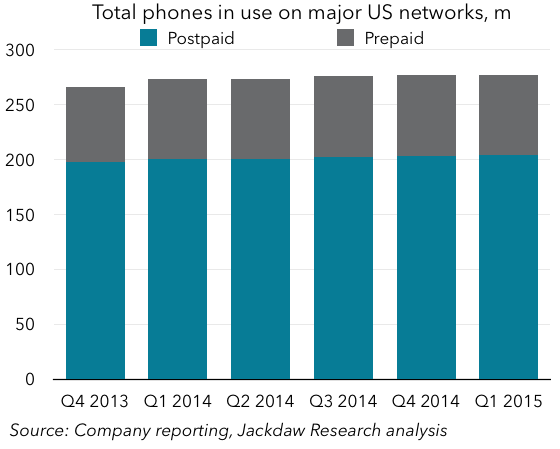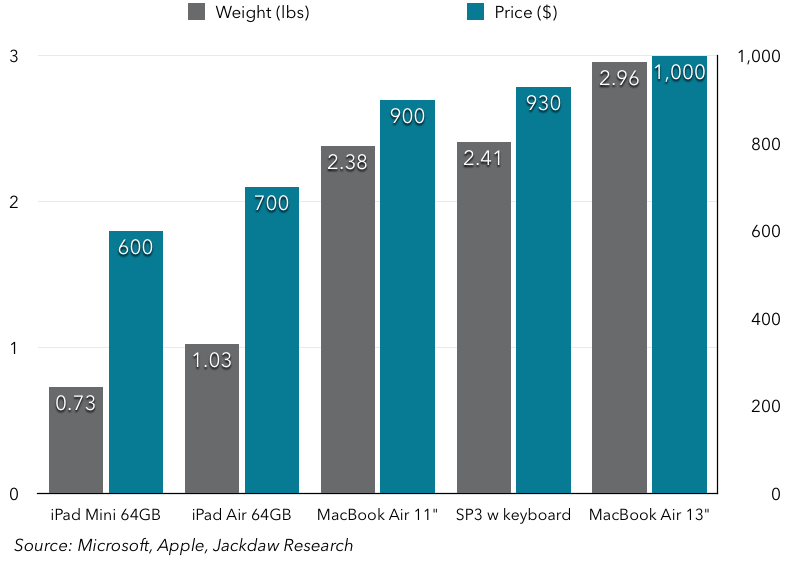In May last year, when Microsoft unveiled the Surface Pro 3, I wrote a piece about the new device but also about the way it was unveiled, titled, “Surface Pro 3, like every other device, is a compromise.” In that piece, I wrote about Microsoft’s insistence that the Surface Pro 3 was a no-compromise device, when in fact all devices represent compromises of one sort or another. I went on to say:
The biggest change in Microsoft’s Surface strategy over the last several years has been the locus of the compromise it’s still inevitably making. The first Surfaces were intended to be good tablets first and good laptops second (and ended up being neither). But with the Surface Pro 3, Microsoft has created a competitive laptop first, and a compromised tablet second. But it’s still pretending that there’s no compromise, and that is why the Surface line will continue to perform poorly. At some point, Microsoft has to stop pretending that a single device can meet all needs and start optimizing for different use cases with different devices, just like every other manufacturer.
Fast-forward to today, and we got the next version of the Surface Pro, the Surface Pro 4. And we saw two of the same phrases from that first event repeated: “no compromise” and “the tablet that can replace your laptop. So far, so predictable.
But then, immediately after the SP4 was introduced, we were shown the Surface Book. Which is a laptop. And Panos Panay, the presenter, started out by talking about all the things a laptop does that the Surface Pro does poorly – a better typing experience, a bigger screen, and so on. This was one of the most bizarre juxtapositions I’ve ever seen at a tech event. After 30 minutes of talking about how the Surface Pro 4 could replace your laptop with no compromises, the very same presenter offered up a laptop which was clearly better, because it didn’t make certain of those compromises.
Taking a step back for a minute, both products look really promising. I’ll withhold final judgment until I get to use these devices (or at least until others I trust have done so and shared their opinions). But this “no compromise” nonsense continues to do a massive disservice to Microsoft and to its customers. As I said in that earlier piece, every device involves a compromise. That compromise might involve features, functionality, look and feel, size, weight, price, or any number of other elements. But every device does involve compromises. And instead of pretending that it doesn’t, Microsoft needs to embrace what’s distinctive and best about each of the devices it offers. However, when you look at the Surface Pro 4 and Surface Book side by side, you start to realize that the Surface Book is really just the concept of the Surface Pro taken to its logical conclusion – thin, light, with a detachable keyboard and pen.
Is there anything that the SP4 does better than the Surface Book? Yes, it’s slightly smaller, and quite a bit lighter than the Surface Book if the keyboard is attached. To my mind, the only benefit to the SP4 is that it’s cheaper – in other words, it’s an inferior but more affordable version of the Surface Book. By the end of the Surface Book demos, I saw people asking on Twitter, “why does Microsoft even need the Surface Pro 4?” and as far as I can tell, the answer is “because the Surface Book starts at $1499”.
One quick comment on OEMs. Unlike the Surface, with which Microsoft said it was creating a new category, and therefore has somewhat been able to skirt around the fact that Microsoft is now competing with its partners, the Surface Book was not burdened with any qualifiers. It was simply positioned as the best, the thinnest, the most powerful Windows 10 laptop. Period. If I’m one of Microsoft’s OEM partners, I’m betting I’m not very happy about that at all. However, those OEMs have only themselves to blame if Microsoft, which has zero experience in making laptops, is able to produce a more compelling computer than the OEMs that have had decades of experience. What does it say about Microsoft’s OEM partners that Microsoft has been able to do this to them, and that it’s willing to do so? The one saving grace is that the vast majority of Windows PCs are sold at well under $1500, and so this really isn’t targeted at the core of the Windows PC market. But it’s still a finger in the eye of the Windows OEMs.
Lastly, this parting thought. Satya Nadella took the stage at the end of the event and gave the kind of speech he’s given at almost every event Microsoft has had since he took over as CEO – big picture themes, Microsoft’s mission statement, and so on. I’m a fan of Nadella, but this speech felt like so much waffle after what was a really compelling set of device introductions. All the energy seemed to go out of the event when he took the stage. The other thing that happened was that, as he mentioned them, I suddenly remembered that Microsoft had introduced a new Band and the Lumia 950 devices earlier in the event. I had almost completely forgotten those by the time the Surface stuff was over with. They were so completely overshadowed by what came after, and for all Panos Panay’s attempts at enthusiasm about the Lumias, it was very clear that he had inherited those products and his true loves were the Surface products. I might still write about the Lumias separately at some point, but for now I see little in them that’s going to transform the fortunes of Windows Phone or Microsoft’s phone hardware business.


